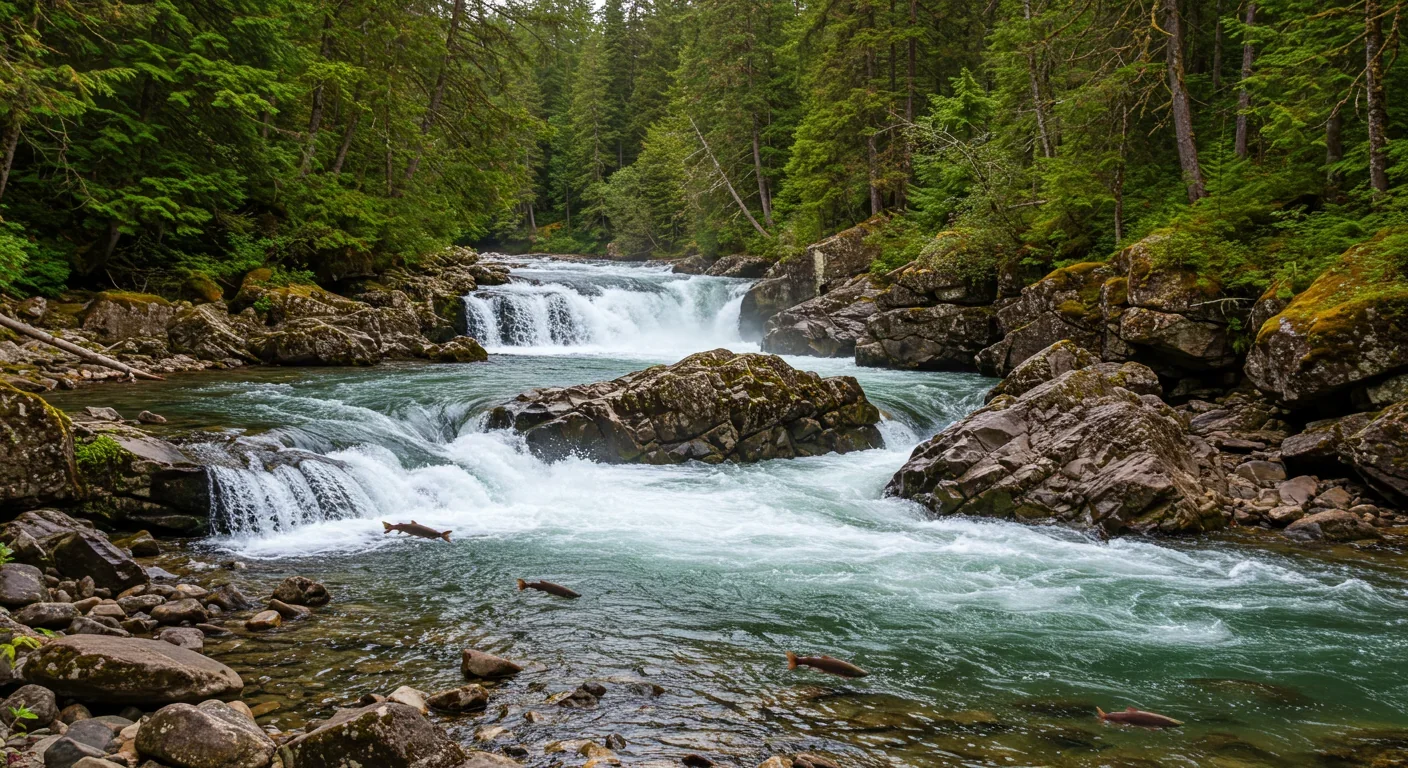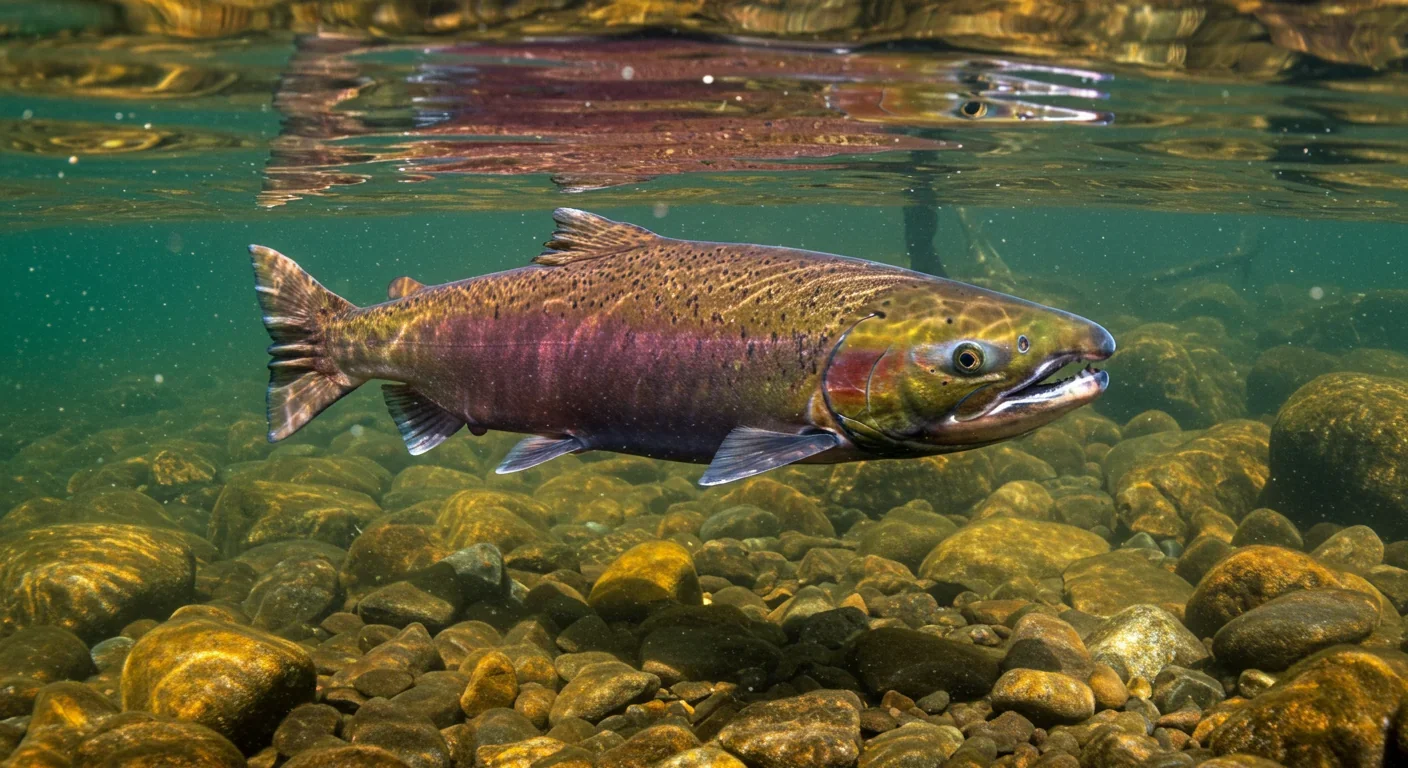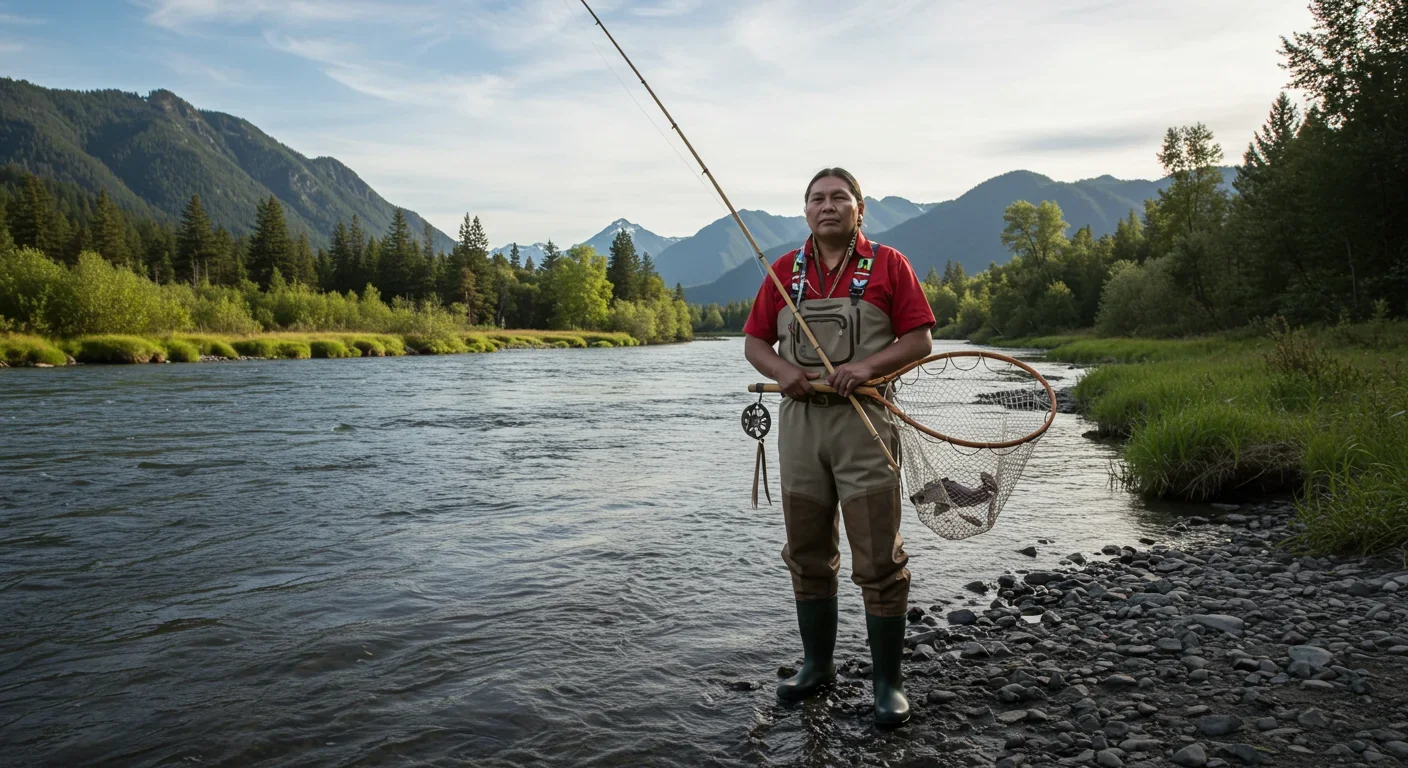Underground Air Storage: Renewable Energy's Hidden Battery

TL;DR: Dam removal is accelerating across America, with record numbers of aging structures dismantled in 2024. Landmark projects on the Elwha and Klamath rivers show salmon populations rebounding within months, proving that rivers can heal remarkably fast when barriers are removed.

Something remarkable is happening across American rivers. While most infrastructure projects focus on building bigger and better, a quiet revolution is doing the opposite—dismantling thousands of aging dams to let rivers flow free again. The results? Salmon returning to waters they haven't seen in a century, ecosystems healing at breathtaking speed, and communities discovering that sometimes the best way forward is to undo the past.
In 2024, the United States tied its record for dam removals, dismantling structures that had choked rivers for generations. This isn't just environmental activism—it's a calculated bet that nature, given half a chance, can restore itself faster and more thoroughly than we ever imagined.
The numbers tell a story of accelerating change. Between 1990 and 2015, roughly 900 dams came down across the United States, averaging 50 to 60 removals per year. But the pace is quickening. By 2020, 85 percent of American dams were more than 50 years old, many outliving their original purpose and becoming expensive liabilities instead of assets.
We're not talking about dismantling Hoover Dam here. The vast majority of removals target small to medium structures—old mill dams, obsolete hydropower facilities, and flood control systems that now cause more problems than they solve. Of the 500,000 dams identified by the National Aquatic Barrier Inventory, only 7 percent actually produce power. The rest? They're aging infrastructure with mounting maintenance costs and diminishing returns.
Only 7% of the 500,000 dams in the United States actually produce electricity. The other 93% are aging infrastructure with mounting costs and declining benefits.
The economics are surprisingly straightforward. Dam removal can be expensive upfront—costs range from tens of thousands to hundreds of millions of dollars—but over the long term, most communities save money by eliminating insurance, maintenance, safety repairs, and fish mitigation expenses. Add in new recreation revenue from restored fishing, kayaking, and rafting, and the business case becomes compelling.

If you want to understand what's possible, look to the Pacific Northwest. The Elwha River restoration began with the removal of two dams—the Elwha Dam in September 2011 (completed March 2012) and the Glines Canyon Dam finished on August 26, 2014. Until 2024, this was the largest dam removal project in history.
The transformation was swift and dramatic. When the dams came down, 10.5 million metric tons of sediment flushed through the system—decades of accumulated river material finally continuing its journey to the sea. Within months, eight anadromous species including chinook, coho, pink, and sockeye salmon, plus steelhead trout, swiftly ascended upstream into areas that had been blocked for nearly a century.
Fish that had lost 90 percent of their habitat suddenly had access to the entire river corridor again. For the first time in generations, salmon were spawning in historic upstream waters, reconnecting ocean habitats with mountain headwaters in the lifecycle these species evolved over millennia.
Then came Klamath. In 2024, workers completed the removal of four dams on the Klamath River—the largest dam removal project ever undertaken. The scale was staggering, but so were the results. Within months, salmon were already spawning in newly accessible reaches. By October 2025, just one year later, observers reported seeing fish jumping all over the place, with significant improvements to water quality and wildlife abundance.
"One year after Klamath dam removal, there's just fish jumping all over the place. The improvements to water quality and wildlife have been remarkable."
— Scientists monitoring the Klamath River recovery
The Klamath project represents something larger than engineering—it's about restoring tribal lands and traditions. For indigenous communities like the Yurok, Karuk, and Hoopa Valley tribes who fought decades for this outcome, the return of salmon means the return of cultural practices, food sovereignty, and a way of life disrupted by colonization and industrial development.
What happens when you remove a dam isn't just about releasing water—it's about unleashing a cascade of interconnected ecological processes that scientists are still working to fully understand.
First, there's the immediate benefit of removing obstructions to migration. Salmon are anadromous, meaning they're born in freshwater, migrate to the ocean to mature, then return to their natal streams to spawn. Dams break this cycle completely. Remove the dam, and suddenly fish can complete their ancient journey again.
But connectivity is just the beginning. Dam removal also restores natural riverine habitat—the mix of pools, riffles, and runs that different life stages require. It brings back natural seasonal flow variations that trigger spawning behavior and shape aquatic communities. It eliminates the siltation of spawning grounds that happens when sediment piles up behind dams instead of moving downstream.

Perhaps most importantly, removal allows debris, small rocks, and nutrients to pass below the dam, creating the complex habitat salmon need. Rivers aren't meant to be smooth channels—they're supposed to be messy, dynamic systems with woody debris creating pools, gravel bars forming spawning beds, and constant rearrangement creating ecological niches.
Temperature matters too. Dams create reservoirs that can alter downstream water temperatures, making them too warm for cold-water species like salmon. When dams come out, natural temperature regimes return, giving salmon the conditions they evolved to thrive in.
And let's not forget that many dams have turbines that kill fish attempting to migrate. Remove the dam, eliminate that source of mortality. The cumulative effect of all these changes explains why fish populations can rebound so quickly—you're not fixing one problem, you're eliminating a whole constellation of interconnected stressors.
The most visible and dramatic aspect of dam removal is what happens to sediment. Dams are sediment traps, accumulating millions of tons of material that would naturally flow downstream. When you remove the dam, all that accumulated sediment is suddenly mobile again.
This creates both challenges and opportunities. Managed poorly, rapid sediment release can cause flooding, erosion, and downstream scour, which is why the technique is only suitable for small impoundments. For larger projects, engineers use the notch and release approach—gradually cutting down the dam structure to allow sediment to be released slowly so ecosystems can adjust.
The Elwha project demonstrated this perfectly. Rather than catastrophic flushing, sediment moved downstream in pulses over years, giving fish and aquatic invertebrates time to adapt. Yes, there was short-term turbidity and some disruption. But within remarkably short timeframes, river channels reformed, spawning gravels appeared in new locations, and biological communities stabilized.
The Elwha Dam removal released 10.5 million metric tons of sediment—decades of accumulated river material—gradually over years, allowing ecosystems to adapt without catastrophic disruption.
There's also a contamination risk. Sediment behind dams can contain pollutants accumulated over decades—heavy metals, PCBs, agricultural chemicals. The Fort Edward Dam removal released PCBs that caused downstream contamination, highlighting why sediment must be tested before release and sometimes removed separately if contamination levels are too high.
But when done right, sediment release is ultimately beneficial. That material isn't waste—it's the building blocks of healthy river habitat. Sediment creates gravel bars where salmon spawn, rebuilds deltas and estuaries where juvenile fish rear, and replenishes beaches that have been starved of sand for generations.

While salmon grab headlines, dam removal triggers benefits that ripple through entire ecosystems. River restoration creates new recreational opportunities—fishing, kayaking, rafting—that generate economic returns for communities. The Elwha has become a destination for anglers and paddlers, bringing tourism dollars to the Olympic Peninsula.
Water quality improves when reservoirs disappear. Standing water in reservoirs can accumulate pollutants, become oxygen-depleted, and grow toxic algae. Flowing water is self-cleansing, maintaining dissolved oxygen levels that support diverse aquatic life. The Klamath removals led to measurable improvements in water quality within the first year.
Riparian vegetation responds quickly too. River corridors that were inundated under reservoirs begin regenerating native plant communities. These plants stabilize banks, filter runoff, provide shade that cools water, and create habitat for birds, mammals, and insects. It's a cascade of recovery—fish return, which brings nutrients upstream in their bodies, which fertilizes vegetation, which supports terrestrial food webs.
Even climate resilience improves. Restored river ecosystems are more adaptable to changing conditions than engineered systems. Free-flowing rivers can adjust their channels as flows change, creating refugia for species during droughts and accommodating higher flows during floods. Living systems have a flexibility that concrete structures lack.
Dam removal isn't without trade-offs and conflicts. The most obvious loss is the reservoir itself—that flat-water habitat gets eliminated, along with the recreational and economic uses tied to it. People who've built lakefront properties or businesses around reservoir recreation face real losses when the lake disappears.
There are also short-term environmental disruptions. Sediment pulses can increase turbidity downstream, potentially affecting aquatic life and water intakes. Wetland areas surrounding reservoirs may drain. Temperature and flow patterns change rapidly, and ecosystems need time to adjust.
Some landowners worry about impacts to property values, irrigation access, or flood risk. While most studies show long-term benefits outweigh costs, the transition period can create winners and losers. Transparent decision-making and stakeholder engagement are crucial for building support.
"The notch and release approach is commonly used because of its ecological benefits, allowing sediment to be released slowly so ecosystems can adjust."
— Dam removal engineering guidelines
The power question looms large in some debates. While only 7 percent of dams produce electricity, those that do contribute to local grids. In an era of climate change when we're trying to decarbonize energy systems, removing even small hydropower sources requires careful consideration. Are we replacing that generation with solar panels? Natural gas? Or is the dam too inefficient to matter?
Cultural and historical values matter too. Some old mill dams are historic structures with community significance. The swimming hole behind a small dam might be where generations learned to swim. These aren't decisive arguments against removal, but they're real concerns that deserve respect and mitigation where possible.

Dam removal has accelerated partly because policy frameworks have evolved to support it. The Federal Energy Regulatory Commission (FERC) oversees 1,045 active hydropower licenses and has increasingly recognized that relicensing aging, inefficient dams might not serve the public interest compared to removal.
Funding mechanisms have multiplied too. The Infrastructure Investment and Jobs Act included significant money for dam removal and ecosystem restoration. States like Massachusetts have awarded nearly $11 million in dedicated funding for removing dangerous dams and improving aquatic connectivity.
Tribal involvement has been transformative. The Klamath removals happened because tribes led decades of advocacy, combining traditional ecological knowledge with modern science and legal strategy. Their persistence shifted the conversation from whether removal was possible to how to do it right.
Environmental groups have also built technical capacity. Organizations like American Rivers, Trout Unlimited, and state-level conservation groups now have specialists who can identify candidates for removal, conduct feasibility studies, navigate permitting, and secure funding. What was once novel is now a repeatable process.
One of the most surprising findings from monitoring projects is how quickly rivers can heal. Within months of the Elwha dams coming down, fish moved upstream. Within a year of the Klamath removals, observers reported dramatic increases in salmon abundance and diversity.
But full recovery takes longer. Salmon populations need multiple generations to recolonize available habitat, rebuild age structure, and stabilize at sustainable levels. Vegetation communities take years to mature. Sediment dynamics and channel morphology continue adjusting for a decade or more.
The research from Elwha—now over a decade into recovery—shows ecosystems continue improving on multiple timescales. Some changes are immediate, others take years, and some processes are still unfolding. It's a reminder that ecological restoration isn't an event, it's a long-term commitment to monitoring, adaptive management, and patience.
Rivers heal faster than we imagined. Fish returned to the Elwha within months, and the Klamath saw dramatic salmon recovery within just one year of dam removal.
The dam removal movement is fundamentally about humility—acknowledging that previous generations made decisions with incomplete information and that we can make better choices today. Many dams were built when we didn't understand salmon biology, river ecology, or the long-term costs of fragmenting watersheds. Now we know better.
It's also about recognizing that infrastructure isn't permanent. Everything we build has a lifespan, and when that lifespan ends, we face a choice: repair and maintain, or remove and restore. For thousands of aging dams, removal is increasingly the smarter bet economically, ecologically, and socially.
The salmon returning to the Klamath and Elwha aren't just wins for fish populations—they're proof that even century-old environmental damage can be reversed. That rivers have astonishing regenerative capacity when we remove barriers. That nature, given the chance, can do things no amount of engineering could replicate.
As more dams come down each year, we're learning that restoration isn't about returning to some pristine past—it's about creating resilient, dynamic systems that can adapt to future changes. Rivers that can sustain salmon runs through droughts and floods. Ecosystems that provide clean water, recreation, and cultural value for the communities that depend on them.
The next time you see a river, imagine it freed from concrete constraints, moving sediment, carving channels, supporting life from headwaters to ocean. That's the future we're building by tearing down the past—one dam at a time.

MOND proposes gravity changes at low accelerations, explaining galaxy rotation without dark matter. While it predicts thousands of galaxies correctly, it struggles with clusters and cosmology, keeping the dark matter debate alive.

Ultrafine pollution particles smaller than 100 nanometers can bypass the blood-brain barrier through the olfactory nerve and bloodstream, depositing in brain tissue where they trigger neuroinflammation linked to dementia and neurological disorders, yet remain completely unregulated by current air quality standards.

CAES stores excess renewable energy by compressing air in underground caverns, then releases it through turbines during peak demand. New advanced adiabatic systems achieve 70%+ efficiency, making this decades-old technology suddenly competitive for long-duration grid storage.

Our brains are hardwired to see patterns in randomness, causing the gambler's fallacy—the mistaken belief that past random events influence future probabilities. This cognitive bias costs people millions in casinos, investments, and daily decisions.

Forests operate as synchronized living systems with molecular clocks that coordinate metabolism from individual cells to entire ecosystems, creating rhythmic patterns that affect global carbon cycles and climate feedback loops.

Generation Z is the first cohort to come of age amid a polycrisis - interconnected global failures spanning climate, economy, democracy, and health. This cascading reality is fundamentally reshaping how young people think, plan their lives, and organize for change.

Zero-trust security eliminates implicit network trust by requiring continuous verification of every access request. Organizations are rapidly adopting this architecture to address cloud computing, remote work, and sophisticated threats that rendered perimeter defenses obsolete.